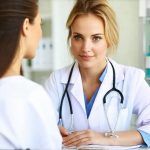The connection between bowel health and bladder pressure is often overlooked, yet it’s profoundly significant for many individuals experiencing urinary frequency, urgency, or even incontinence. We tend to treat these systems – digestive and urogenital – as separate entities when, in reality, they are intricately linked through anatomy, neurology, and overall pelvic floor function. A compromised digestive system can directly impact bladder control, leading to increased pressure and discomfort. Understanding this relationship is the first step towards finding lasting relief, moving beyond solely focusing on bladder-specific treatments and addressing potential root causes within the gut. This article will explore how optimizing bowel health can alleviate bladder pressure symptoms and offer practical strategies for improvement.
Many people experiencing persistent bladder issues assume the problem lies entirely with their urinary system. While that can be the case, a frequently contributing factor is constipation or irregular bowel movements. When the rectum becomes full, it physically presses against the bladder, reducing its capacity and triggering an urgent need to urinate even when the bladder isn’t truly full. Furthermore, straining during bowel movements weakens the pelvic floor muscles – the very same muscles that support both the bladder and bowel – exacerbating symptoms over time. This creates a vicious cycle where constipation leads to weakened pelvic floor function, which further contributes to bladder problems. Recognizing this interplay is vital for holistic health management.
The Gut-Bladder Connection: Anatomy & Physiology
The intimate relationship between the gut and bladder isn’t just theoretical; it’s rooted in shared anatomy and neurological pathways. Both organs reside within the pelvis and are heavily influenced by the pelvic floor muscles. These muscles act as a sling, supporting both the bladder and rectum, maintaining their proper positioning and function. A healthy, functioning digestive system relies on regular bowel movements which, in turn, prevent excessive pressure on these crucial support structures.
The nervous systems of the gut and bladder are also interconnected via the pudendal nerve. This nerve serves many functions related to pelvic floor muscles and sensation, impacting both bowel and bladder control. Dysfunction or irritation within the digestive system can affect nerve signaling, leading to altered bladder function. For example, chronic constipation can cause inflammation and sensitivity in the pudendal nerve, resulting in increased urinary frequency and urgency.
Finally, hormonal imbalances – often influenced by gut health – also play a role. The microbiome (the community of bacteria living in our gut) impacts hormone regulation, including estrogen levels which are crucial for pelvic floor strength. A disrupted microbiome can contribute to hormonal fluctuations that weaken the pelvic floor, ultimately affecting bladder control. Maintaining a healthy gut is therefore essential not just for digestion but for overall pelvic health.
Dietary Strategies for Improved Bowel Function
Dietary changes often represent the most impactful initial step towards improving bowel health and reducing bladder pressure. A diet lacking in fiber, fluids, or containing excessive processed foods can contribute to constipation and digestive distress. Focusing on whole, unprocessed foods is paramount. Here are some key dietary considerations:
- Increase Fiber Intake: Aim for 25-35 grams of fiber per day from sources like fruits, vegetables, whole grains, and legumes. Gradually increase your intake to avoid bloating or gas.
- Hydration is Key: Drink at least 8 glasses of water daily. Dehydration hardens stool, making it more difficult to pass.
- Limit Processed Foods: These foods are often low in fiber and high in unhealthy fats, contributing to digestive sluggishness. Reduce intake of refined sugars, fast food, and packaged snacks.
- Consider Probiotic-Rich Foods: Fermented foods like yogurt (with live cultures), kefir, sauerkraut, and kimchi support a healthy gut microbiome.
Beyond these general guidelines, identifying individual food sensitivities can be incredibly helpful. Food intolerances – even mild ones – can cause inflammation in the gut, impacting both bowel and bladder function. An elimination diet, guided by a healthcare professional, might be beneficial for pinpointing problem foods. Remember that dietary changes are most effective when implemented gradually and consistently.
Optimizing Bowel Habits
Improving your diet is only half the battle; establishing healthy bowel habits is equally important. Many people suppress the urge to defecate due to convenience or embarrassment, but this can weaken the natural reflexes of the digestive system. Here’s how to cultivate better bowel habits:
- Respond to the Urge: Don’t ignore the signal that your body needs to eliminate. Going when you feel the urge helps maintain regularity and prevents stool from becoming hardened in the colon.
- Create a Routine: Try to establish a regular time for bowel movements, even if it’s just for 15-20 minutes each day. This could be after breakfast, as eating stimulates the digestive system.
- Proper Positioning: Using a squatty potty or simply raising your feet on a small stool while using the toilet can help to straighten the anorectal angle, making bowel movements easier and more complete.
Furthermore, avoid straining during bowel movements. Straining weakens the pelvic floor muscles over time, exacerbating bladder pressure symptoms. If you consistently struggle with constipation, consider incorporating gentle exercise into your routine, as physical activity stimulates gut motility. Consistent routines are often far more effective than sporadic attempts at change.
The Role of Pelvic Floor Exercises
While addressing bowel health is crucial, strengthening the pelvic floor muscles remains a vital component of bladder pressure management. These exercises, often referred to as Kegels, can help restore support to both the bladder and rectum, improving overall pelvic stability. However, it’s essential to perform them correctly:
- Identify your pelvic floor muscles: Imagine you are trying to stop the flow of urine midstream. The muscles you engage are your pelvic floor muscles.
- Perform the exercises: Squeeze these muscles for 3-5 seconds, then relax for 3-5 seconds. Repeat this cycle 10-15 times.
- Focus on proper form: Avoid squeezing other muscle groups – such as your abdomen or glutes – during the exercise.
It’s also important to note that overdoing Kegels can sometimes be counterproductive, leading to pelvic floor tension. If you experience pain or discomfort, consult with a physical therapist specializing in pelvic health for guidance. A balanced approach, combining bowel optimization and targeted pelvic floor exercises, yields the best results.
Addressing Underlying Digestive Issues
For some individuals, dietary changes and exercise aren’t enough. Underlying digestive conditions – such as Irritable Bowel Syndrome (IBS), Small Intestinal Bacterial Overgrowth (SIBO) or Inflammatory Bowel Disease (IBD) – may be contributing to chronic constipation and bladder pressure. If you suspect an underlying condition, seeking professional medical evaluation is essential. A healthcare provider can conduct appropriate testing to diagnose the issue and recommend a tailored treatment plan. This might involve medication, further dietary modifications, or specialized therapies like gut-directed hypnotherapy. Ignoring these underlying issues will likely hinder long-term improvement.
Disclaimer: This article provides general information for educational purposes only and should not be considered medical advice. It is essential to consult with a qualified healthcare professional before making any changes to your diet, exercise routine, or treatment plan.





















